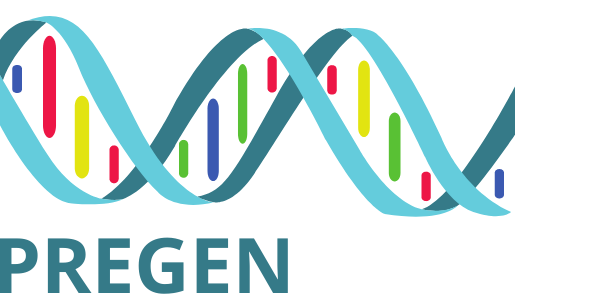Research

Gene Discoveries - A/Prof Tony Roscioli (PreGen CI)
46 GENE/PHENOTYPE TOTAL DISCOVERIES
22 GAIA GENE
SLC13A4 – skeletal dysplasia (ms prep)
CBX1 – ID (ms prep)
GTF3C3 – ID (ms prep)
TTI1 – ID (ms prep)
ZMYND8 – ID in press
FBXW7 – ID [PMID 35395208]
LMOD2 – cardiomyopathy [35082396 ]
ZNFX1 – HLH immunodeficiency [33872655
CDH11 – cleft/Teebi [33811646]
AGO2 – ID [33199684]
MTPAP – encephalopathy [31779033]
GDF11 – orofacial clefting [31215115]
FST – orofacial clefting [31215115]
PLOD3 – Connective tissue disorder [31129566]
ATM1 – ID [30929742]
SMARCC2 – ID [30580808]
MSL3 – ID [30224647]
MED13L – ID [29511999]
PUM1 – ID [29474920]
KCN2 – encephalopathy [29069600]
ARHGAP29 – orofacial clefting [28029220]
ARV1 – encephalopathy [27270415]
5 PHENOTYPE EXPANSIONS
BCAS3 – [34981858]
KIF1a – [32652677]
LARS2 – [32442335]
ECHS1 – [28409271]
GRIN2B – [28377535]
19 RESEARCH COHORT GENE IDENTIFICATIONS
BMP7 – GWAS craniosynostosis [33266521]
CTNND1 – orofacial clefting [29805042]
PLEKHA7 – orofacial clefting [29805042]
PLEKHA5 – orofacial clefting [29805042]
ESRP2 – orofacial clefting [29805042]
PLEXND1 – Moebius synd [26068060]
REV3L – Moebius synd [26068060]
IL11RA – crouzon [24498618]
BMP2 – GWAS craniosynostosis [23160099]
BBS9 – GWAS craniosynostosis [23160099]
PIGO – ID [2268086]
CRAPPB – Walker Warburg [22522421]
ACTB – Baraitser Winter [22366783]
ACTG1 – Baraitser Winter [22366783]
B3GNT1 – Walker Warburg [23359570]
PIGV – ID [20802478]
SLC29A3 – Immunodeficiency [19336477]
SP110 – Immunodeficiency [16648851]
ENPP1 – Arterial calcification [12881724]
PreGen Journal Articles
Journal Articles
Fetal diagnosis of Mowat‐Wilson syndrome by whole exome sequencing. American Journal of Medical Genetics Part A. 179. 10.1002/ajmg.a.61295. Evans, Carey‐Anne, Pinner, Jason, Chan, Cheng, Bowyer, Lucy, Mowat, David, Buckley, Michael, Roscioli, Tony. (2019).
Mowat‐Wilson syndrome (MWS) is a complex genetic disorder associated with heterozygous variation in ZEB2. It is mainly characterized by moderate‐to‐severe intellectual disability, facial dysmorphism, epilepsy, and various malformations including Hirschsprung disease, corpus callosum anomalies, and congenital heart defects. It is rarely diagnosed prenatally and there is limited information available on the prenatal phenotype associated with MWS. Here we report the detection of a heterozygous de novo nonsense variant in ZEB2 by whole exome sequencing in a fetus with microphthalmia in addition to cardiac defects and typical MWS facial dysmorphism. As the prenatal phenotypic spectrum of MWS expands, the routine addition of fetal genomic testing particularly in the presence of multiple malformations will increase both the sensitivity and specificity of prenatal diagnostics.
De novo putative loss-of-function variants in TAF4 are associated with a neuro-developmental disorder. Human Mutation.
Beau D E Janssen, Marie-Jose H van den Boogaard, Klaske Lichtenbelt, Eleanor G Seaby, Karen Stals, Sian Ellard, Ruth Newbury-Ecob, Abhijit Dixit, Laura Roht, Sander Pajusalu, Katrin Õunap, Helen V Firth, Michael Buckley, Meredith Wilson, Tony Roscioli, Timothy Tidwell, Rong Mao, Sarah Ennis, Sjoerd J Holwerda, Koen van Gassen, Richard H van Jaarsveld. 2022.
TATA-binding protein associated factor 4 (TAF4) is a subunit of the Transcription Factor IID (TFIID) complex, a central player in transcription initiation. Other members of this multimeric complex have been implicated previously as monogenic disease genes in human developmental disorders. TAF4 has not been described to date as a monogenic disease gene. We here present a cohort of eight individuals, each carrying de novo putative loss-of-function (pLoF) variants in TAF4 and expressing phenotypes consistent with a neuro-developmental disorder (NDD). Common features include intellectual disability, abnormal behavior, and facial dysmorphisms. We propose TAF4 as a novel dominant disease gene for NDD, and coin this novel disorder “TAF4-related NDD” (T4NDD). We place T4NDD in the context of other disorders related to TFIID subunits, revealing shared features of T4NDD with other TAF-opathies.
